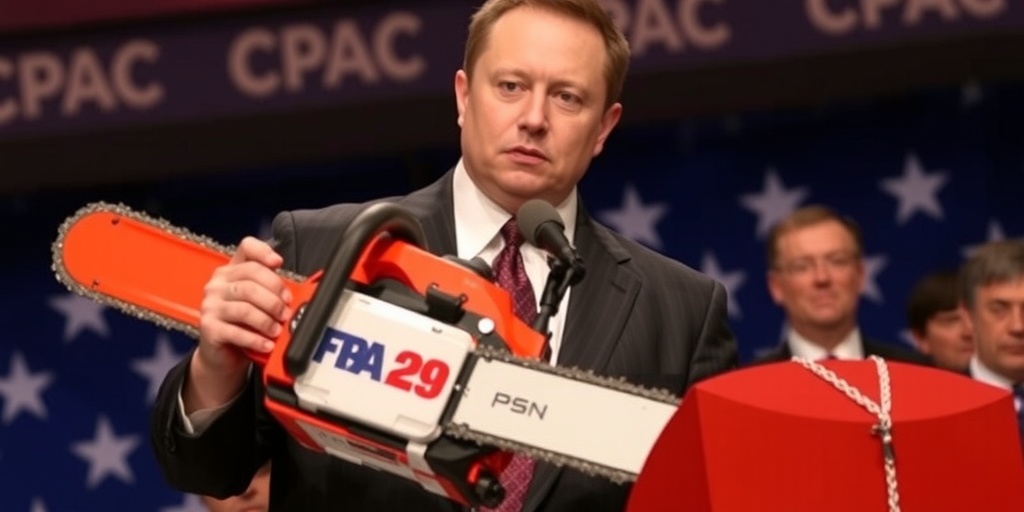Now Reading: Trump Team Split on Future of U.S. Embassy in Somalia
-
01
Trump Team Split on Future of U.S. Embassy in Somalia
Trump Team Split on Future of U.S. Embassy in Somalia

U.S. Embassy in Somalia Faces Security Concerns Amid Al Shabab Gains
In light of recent military advancements by the Islamist insurgency Al Shabab in Somalia, discussions within the U.S. State Department have turned serious, with certain officials advocating for the closure of the U.S. embassy in Mogadishu and the withdrawal of most American personnel as a precautionary security measure. These deliberations come amid heightened tensions regarding the safety of diplomatic staff and concerns about the deteriorating security situation in the region.
Contrasting views have emerged among officials in the Trump administration concerning the future of U.S. involvement in Somalia. While some suggest a pullback, citing worries about embassy security and the potential for an escalation of violence, others—primarily within the National Security Council—urge against such a move. They believe that shutting down the embassy could weaken confidence in Somalia’s fragile central government and might unintentionally accelerate its collapse. This faction argues for a strengthened commitment to U.S. operations aimed at bolstering the Somali government against the Al Shabab insurgency.
The anxiety surrounding these discussions is reminiscent of prior foreign policy failures, such as the 2012 attack on the U.S. mission in Benghazi, Libya, and the abrupt fall of the Afghan government following the 2021 withdrawal of American forces. These events serve as a backdrop to the ongoing discussions and the difficult strategic choices facing the Trump administration as it reassesses U.S. policy in Somalia, a country plagued by complex clan dynamics and ongoing instability.
A notable conflict within the administration pits President Trump’s counterterrorism adviser, Sebastian Gorka, against more isolationist elements within the coalition. Gorka’s hawkish stance advocates for a robust military response to Al Shabab, while a faction disillusioned with "forever wars" argues that U.S. interests do not necessitate military intervention in Somalia.
Last week, Gorka led an interagency meeting at the White House aimed at developing a cohesive strategy for Somalia. However, sources report that the meeting concluded without reaching a clear consensus on the course of action, highlighting the divisions within the administration.
Historically, the U.S. has implemented a policy aimed at reinforcing Somalia’s central government by training and equipping its special forces, known as the Danab. This strategy has included drone strikes to provide direct support in the battle against Al Shabab—a group with ties to Al Qaeda. However, despite these efforts, the ongoing instability raises questions about the efficacy of this approach. Conditions on the ground have reportedly worsened, with some Somali forces failing to engage in combat against Al Shabab, and President Hassan Sheikh Mohamud facing challenges in maintaining support across the political spectrum.
The National Security Council and the Pentagon have refrained from commenting on the discussions, while a State Department spokesperson affirmed that the embassy in Mogadishu remains fully operational. This official stated that the department is constantly monitoring threat information and making adjustments to security protocols as necessary.
Maureen Farrell, who served as the Pentagon’s top Africa policy official during the Biden administration, emphasized that no purely military solution exists for the Al Shabab crisis. She argued for a balanced approach that would focus on negotiating political settlements with less extreme factions of the group while continuing to target hardliners decisively.
Under the Trump administration, military efforts in Somalia were ramped up, including the loosening of restrictions on drone strikes previously imposed during Obama’s tenure. However, in the closing weeks of his presidency, Trump shifted course, ordering a withdrawal of most U.S. forces, save for those protecting the embassy. This redeployment transferred U.S. military personnel to neighboring countries such as Kenya and Djibouti while still allowing for occasional rotations into Somalia for training and support missions.
Currently, an estimated 500 to 600 American troops remain stationed in Somalia, as U.S. Africa Command continues to execute airstrikes against Islamic State units in the northern part of the country. Several weeks ago, Al Shabab’s advances brought the group alarmingly close to Mogadishu, leading to queries about the embassy’s safety—situated within a heavily fortified compound at the airport. As the onset of the rainy season temporarily eased hostilities, some time has been bought for U.S. officials to reconsider their strategies.
In a recent analysis, Omar Mahmood, a senior analyst at the International Crisis Group, argued that while the Somali government is indeed struggling, fears regarding Al Shabab’s imminent capture of Mogadishu may be overstated. He noted that the group’s recent gains may not indicate a focused intent on the capital itself and advised against overreacting to recent setbacks.
Despite the complexities of maintaining a U.S. presence in Somalia, there is discussion about potentially consolidating embassy operations within the region. Some officials have suggested moving diplomatic engagements to neighboring countries, helping to address budgetary concerns while maintaining oversight of Somali affairs. Another proposal involves relocating certain embassy functions to facilities in semi-autonomous regions such as Somaliland.
In summary, the question of U.S. involvement in Somalia now hinges on strategic decisions regarding military engagement and diplomatic presence. With the specter of Al Shabab’s expansion looming, U.S. policymakers are grappling with the critical challenge of determining a coherent approach to evolving threats in a region marked by instability and uncertainty.
Stay Informed With the Latest & Most Important News
Previous Post
Next Post
-
 01New technology breakthrough has everyone talking right now
01New technology breakthrough has everyone talking right now -
 02Unbelievable life hack everyone needs to try today
02Unbelievable life hack everyone needs to try today -
 03Fascinating discovery found buried deep beneath the ocean
03Fascinating discovery found buried deep beneath the ocean -
 04Man invents genius device that solves everyday problems
04Man invents genius device that solves everyday problems -
 05Shocking discovery that changes what we know forever
05Shocking discovery that changes what we know forever -
 06Internet goes wild over celebrity’s unexpected fashion choice
06Internet goes wild over celebrity’s unexpected fashion choice -
 07Rare animal sighting stuns scientists and wildlife lovers
07Rare animal sighting stuns scientists and wildlife lovers





















